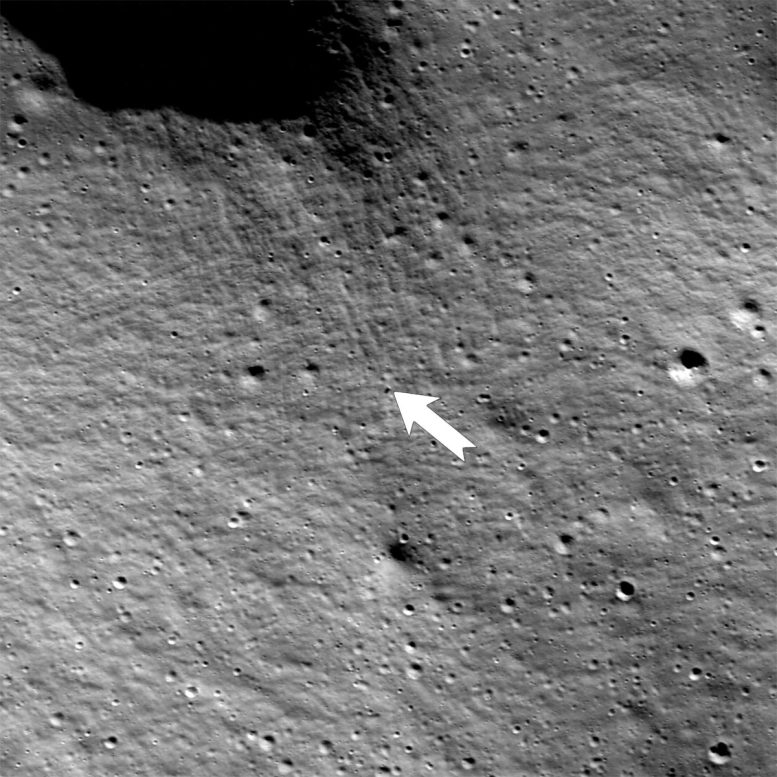
NASA’s Lunar Reconnaissance Orbiter captured this image of the Intuitive Machines’ Nova-C lander, called Odysseus, on the Moon’s surface on Feb. 24, 2024, at 1:57 p.m. EST). Odysseus landed at 80.13 degrees south latitude, 1.44 degrees east longitude, at an elevation of 8,461 feet (2,579 meters). The image is 3,192 feet (973 meters) wide, and lunar north is up. Credit: NASA/Goddard/Arizona State University
Odysseus’ landing on the Moon represents a landmark achievement for NASA’s lunar exploration, capturing the first soft landing in over 50 years and highlighting the capabilities of modern space technology.
On February 22, Intuitive Machines’ Nova-C lander, called Odysseus, completed a seven-day journey to lunar orbit and softly landed near crater Malapert A in the South Pole region of the Moon at 6:24 p.m. EST. On February 24, NASA’s Lunar Reconnaissance Orbiter (LRO) spacecraft passed over the landing site at an altitude of about 56 miles (90 km) and photographed Odysseus.
Odysseus came to rest at 80.13 degrees south latitude, 1.44 degrees east longitude, 8,461 feet (2,579 meters) elevation, within a degraded one-kilometer diameter crater where the local terrain is sloped at 12 degrees.
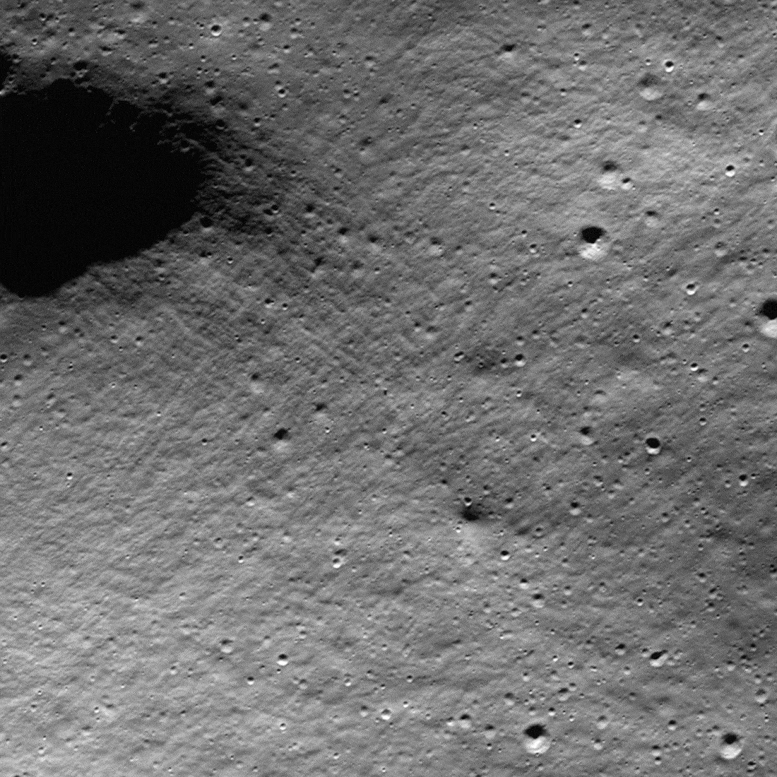
This image pair shows LRO views of the area surrounding the Odysseus site before (frame M172936310) and after (frame M1463440322L) its landing. Credit: NASA/Goddard/Arizona State University
Odysseus marks the first successful soft landing of NASA’s CLPS (Commercial Lunar Payload Services) initiative and the first time that new NASA science instruments and technology demonstrations are operating on the Moon in more than 50 years.
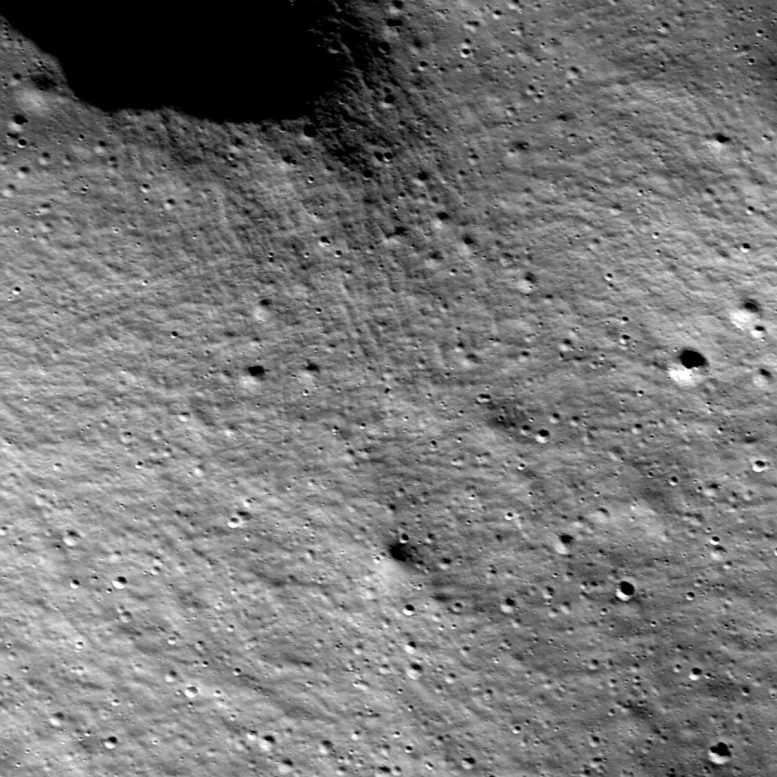
This image is the same as the one at the top of the page, but without the arrow. NASA’s Lunar Reconnaissance Orbiter captured this image of the Intuitive Machines’ Nova-C lander, called Odysseus, on the Moon’s surface on February 24, 2024, at 12:57 pm CST). The image is 3,192 feet (973 meters) wide, and lunar north is up. Credit: NASA/Goddard/Arizona State University
Intuitive Machines’ Nova-C Lander
The Nova-C lander, developed by Intuitive Machines, represents a significant milestone in lunar exploration technology. It is designed to deliver payloads to the Moon’s surface, supporting NASA’s Commercial Lunar Payload Services (CLPS) initiative. Nova-C is capable of carrying up to 100 kilograms of cargo, including scientific instruments and technology demonstrations.
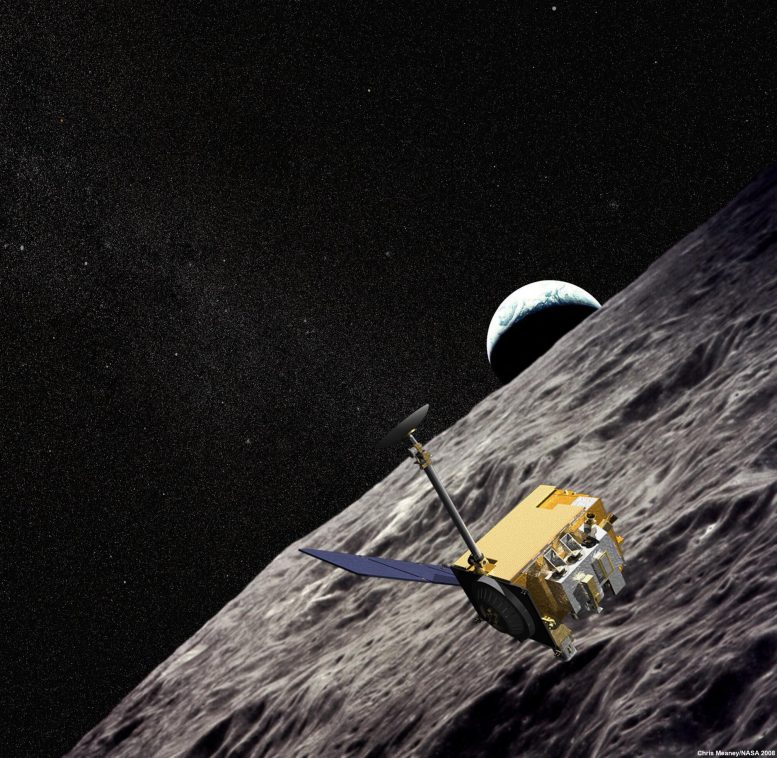
Artist’s rendering of NASA’s Lunar Reconnaissance Orbiter. Credit: NASA’s Goddard Space Flight Center
NASA’s Lunar Reconnaissance Orbiter
NASA’s Lunar Reconnaissance Orbiter (LRO) is a pivotal spacecraft designed to map the Moon’s surface in unprecedented detail. Launched on June 18, 2009, the LRO’s mission is to collect vital data on the Moon’s topography, temperature, resources, and potential landing sites. Equipped with a suite of scientific instruments, including the Lunar Reconnaissance Orbiter Camera (LROC), the LRO has significantly enhanced our understanding of the Moon’s environment, facilitating planning for future manned and unmanned missions to the lunar surface.
LRO is managed by NASA’s Goddard Space Flight Center in Greenbelt, Maryland, for the agency’s Science Mission Directorate at NASA Headquarters in Washington. Launched on June 18, 2009, LRO has collected a treasure trove of data with its seven powerful instruments, making an invaluable contribution to our knowledge about the Moon. Arizona State University manages and operates the Lunar Reconnaissance Orbiter Camera, LROC.

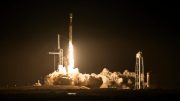





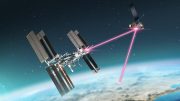

Be the first to comment on "NASA’s Lunar Reconnaissance Orbiter Captures Odysseus Lander on Moon"